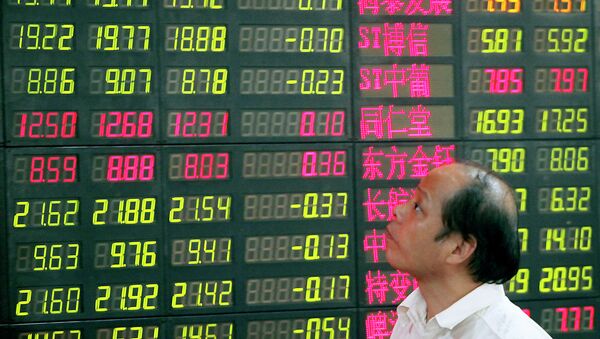MOSCOW, February 1 (Sputnik) – China's National Bureau of Statistics (NBS) on Sunday released data showing that the country's manufacturing activity shrank in January for the first time since October 2012, Xinhua reports.
"The manufacturing purchasing managers' index (PMI), a key measure of factory activity in China, posted at 49.8 in January, down 0.3 percentage point from December," wrote the agency on Sunday.
The PMI is a composite index based on five major indicators of economic health in the manufacturing sector: new orders, output, employment, supplier deliveries and inventory levels. A reading above 50 represents expansion on a monthly basis, and a reading below 50 indicates a contraction. A figure of 50 indicates no change.
Zhao Qinghe, a senior statistician at the NBS, told Xinhua that January is a traditionally slow period for manufacturing, and that the PMI's decline is also result of the upcoming Spring Festival holiday, with falling commodity prices and sluggish market demands also contributing to its retreat.
On January 23, HSBC published its Flash China Manufacturing PMI, based on 85-90 percent of total responses, ahead of final PMI data, which it will publish February 2. According to the bank's flash reading, PMI for January rose to 49.8 from 49.6 in December. The December data represented a seven-month low; the reading had been 50.0 in November. Data for January "suggest that the manufacturing slowdown is still ongoing amidst weak domestic demand," said HSBC this month, warning that "more monetary and fiscal easing measures will be needed to support growth in the coming months."
Reuters reports that expectations are rising among experts that monetary policy will be eased further in a bid to stimulate growth. The news agency reported on Friday that economists from ANZ, a New Zealand-based bank, had communicated to banking clients that "China still needs decent growth to add 100 million new jobs this year, plus China is entering a rapid disinflation process," the agency reported on Saturday. "We (think) the People's Bank of China will cut the reserve requirement ratio by 50 basis points and cut the deposit rate by 25 basis points in the first quarter."
China posted annual growth of 7.4 percent for 2014, its weakest growth for 24 years and down from 7.7 percent in 2013. A housing slump, investment slowdown and high levels of debt conspired to prevent the Chinese economy from meeting its annual growth target, 7.5 percent, for the first time in 15 years.


